Bullshot
Well-known member
Random question: Why are there not more Rocky Mountain elk in eastern CA? I’ve never been there, but seems habitat would accommodate them well plus elk are very adaptable to different habitat types.
Follow along with the video below to see how to install our site as a web app on your home screen.
Note: This feature may not be available in some browsers.
CDFW scientists have witnessed Rocky Mountain elk populations growing in the north state over the past decade and expanding their range to the south where they haven’t been seen before.
Three reproducing Rocky Mountain elk herds are now confirmed in Plumas and Sierra counties with elk also documented having visited El Dorado County. These animals exist outside of regulated hunting zones and are off-limits to elk hunters. CDFW environmental scientists are currently seeking funding to better study these populations, which could lead to hunting opportunities in the future.
Point Reyes? Tick capitol of the world.We’ve got a good sized herd of Tule elk by us on the central/north coast. Unfortunately kept in a fairly restricted area and no hunting allowed. Too many politics to get into the why.
Sorry for the low quality pics but my daughter took them with the phone held up to a cheap set of binoculars. We went for a drive to check out a 30 foot swell that rolled through during a storm a few weeks back. Always cool to see the elk out doing their thing.
-Eliot
Yes and yes!Point Reyes? Tick capitol of the world.
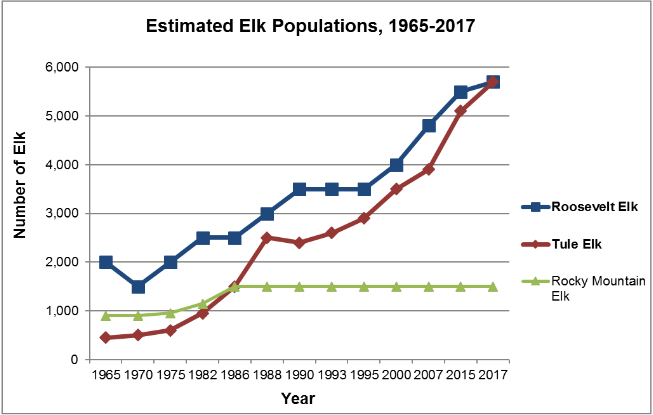
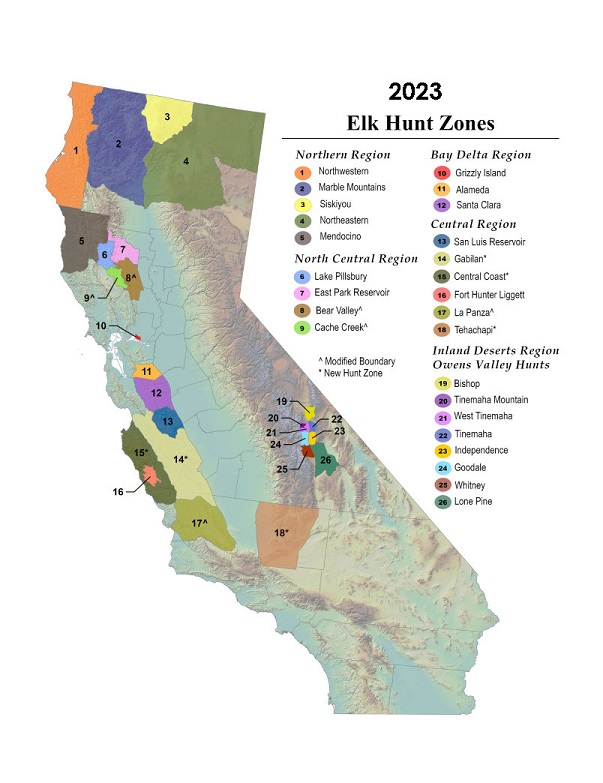
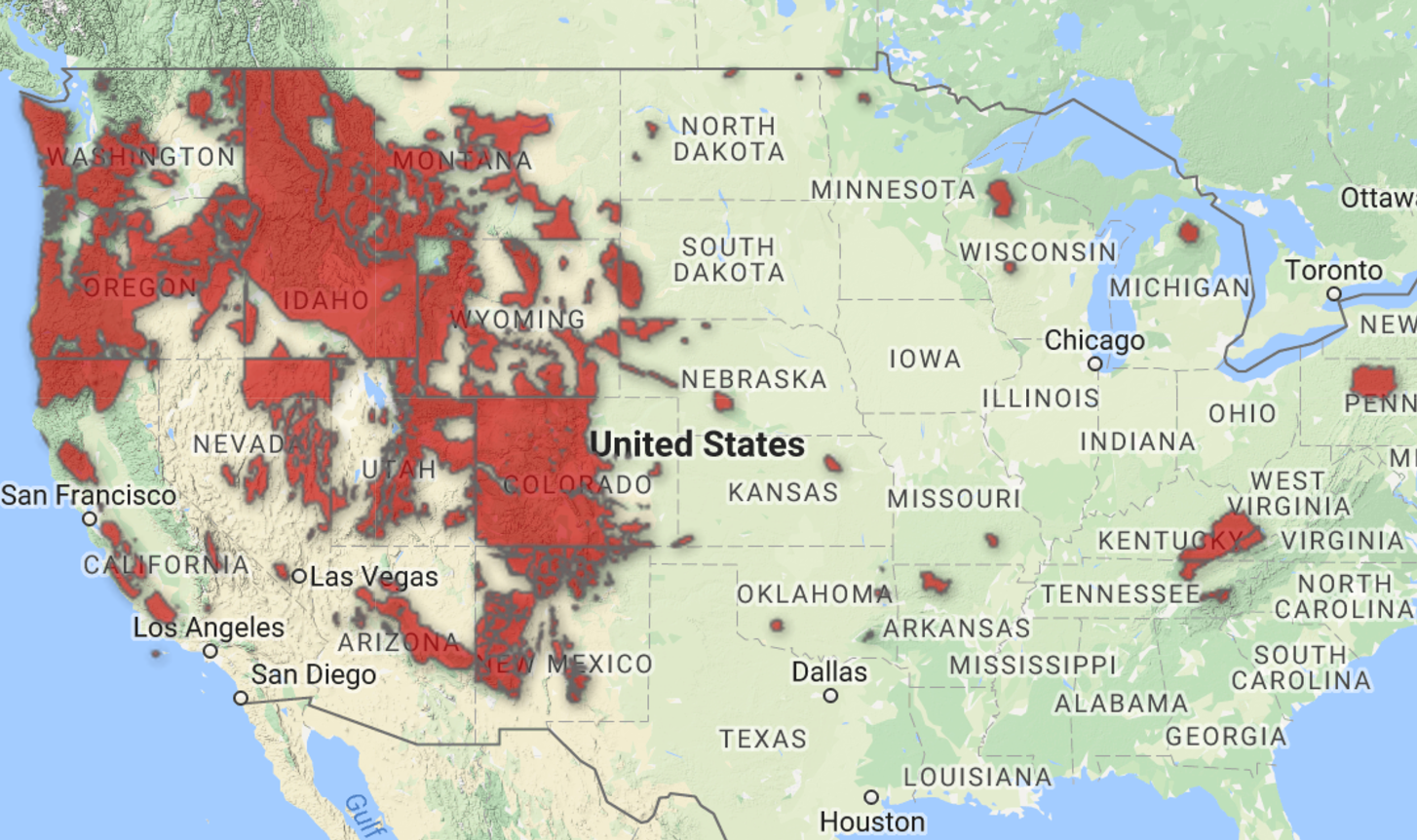
no elk in the eastern sierras.
Following The Unusual Migration Of A Trailblazing Elk
- June 1, 2020
About a dozen years ago, California Department of Fish and Wildlife (CDFW) biologist Nathan Graveline heard rumors that a sole elk had been spotted in a highly unusual location – the Stanislaus National Forest, between the Clavey and Tuolumne rivers. At the time, scientists didn't have the technology to confirm the reports.
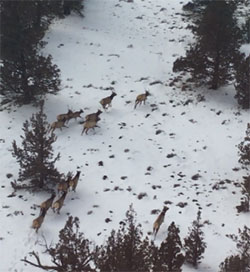
Rocky Mountain elk in Modoc County taken during a CDFW survey in 2019.
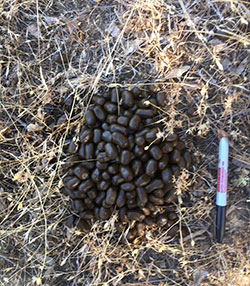
Scientists at UC Davis analyzed scat to determine where the elk originated.
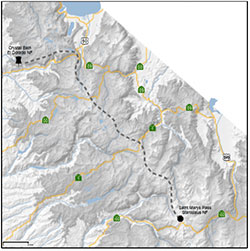
A map of the elk’s journey from Tahoe to Sonora Pass.
About a dozen years ago, California Department of Fish and Wildlife (CDFW) biologist Nathan Graveline heard rumors that a sole elk had been spotted in a highly unusual location – the Stanislaus National Forest, between the Clavey and Tuolumne rivers. At the time, scientists didn't have the technology to confirm the reports.
“Nobody knew where the elk came from. We weren't able to piece any of that together,” said Graveline.
Last September, scientists got word of another unexpected elk sighting, this time just south of Lake Tahoe in the Crystal Basin Recreation Area. “When I heard there was possibly an elk back in the area, I thought, ‘We’ve got to jump on this. If we can get a good DNA sample, we can figure out where the elk came from,’” said Graveline.
They set up trail cameras and were able to get a photograph of the elk. They also collected scat samples, which they sent to Dr. Benjamin Sacks, director of the Mammalian Ecology and Conservation Unit at the University of California, Davis’ Veterinary Genetics Lab. Through DNA analysis, Dr. Sacks and Ph.D. student Taylor Davis determined that the elk probably originated from a herd in the northeastern part of the state.
“We first estimated likelihoods of the observed genotype originating from each potential population based on the frequency of the alleles in those populations. We then obtained a probability or origin for each population by dividing its likelihood by the sum of all likelihoods for all populations,” said Dr. Sacks.
The report of an elk near Lake Tahoe was unusual in and of itself — but six weeks later the story got even more interesting. Scientists conducting a helicopter survey reported seeing a bull elk near Sonora Pass.
Scientists went to the location of the reported sighting and were able to collect scat samples, which they sent to Dr. Sacks’ lab for analysis.
“We did the genotyping and it turns out it was the exact same elk that was tracked south of Lake Tahoe,” said Tom Batter, a Ph.D. candidate in Dr. Sacks’ lab.
It appears scientists had on their hands a trailblazing elk — a Rocky Mountain elk that traveled 40 miles in six weeks and ended up farther south in the Sierra than had previously been reported.
“That boy was on quite a quest,” said Shelly Blair, a unit biologist in El Dorado County. “He likely traveled over some pretty rocky terrain, depending on which route he took. He probably had to cross over Interstate 80 or the 395 corridor at some point. Without the DNA, it would have been a total mystery as to where the elk came from.”
Kristin Denryter, coordinator of CDFW’s Elk and Pronghorn Antelope Program, said the bull’s journey is likely evidence of population growth among elk or herd densities that exceed the carrying capacity of the habitat.
“We know there’s great potential for expansion by bulls, and this means there could be recolonizations happening. We want our elk to be expanding and figuring out new habitats and going to new places. A bull elk like this might be figuring out new migratory routes and allowing for migration to persist. If he’s taking this route, then other elk and wildlife could be doing the same in the future,” said Denryter.
As to what motivated the bull elk to travel so far off the beaten path, Graveline says it may have been looking for a mate or new territory.
“He went farther south than he would need to for food, so I don’t think he was driven by that. This is a younger bull, and sometimes they get pushed out of a herd by a more mature bull,” he said.
Denryter added, “Younger males that are not competitive for mates are more likely to go off on their own or get pushed out of the herd. There’s absolutely a chance he could turn around and head back the way he came, but he’ll likely keep moving to find a mate.”
Although the elk is described by scientists as young, its exact age is unknown. Elk typically live 10-13 years in the wild. As far as threats in the wild – mountain lions hunt elk, but deer are their preferred prey. This elk’s biggest threat would likely be poaching, said Denryter.
Scientists are excited about the possibility that elk are expanding their range, but it’s also their job to prepare for corresponding conflicts.
“It’s kind of a double-edged sword,” said Denryter. “There’s risk of disease if elk come into contact with livestock while creating new migratory routes, and they can compete with livestock for forage. They can also cause vehicle accidents. Understanding the movements of elk and other wildlife is important so we can address these potential conflicts.”
CDFW would like help from the public in tracking the movements of elk populations statewide. Elk sightings can be reported online on the department’s website.
“If you see an elk — especially in places where you don’t normally see one — definitely take a photo with your smartphone and let us know,” said Denryter. “Smartphone photos are geotagged which will help us confirm the location. The online form allows you to upload photos and share any interesting observations. It’s really helpful to have this information so when there are conflicts or regulatory changes proposed we have data to help make informed decisions.”
There are elk in the Eastern Sierra. There's a good sized population of Tule elk in the Owens Valley and they work their way up into the high basins along the eastern escarpment. I've seen them up near 11,000ft before. The biggest problem is that the mountains are steep and rocky, there's not as much feed as you would think up in the high sierra.To the question of why there are no elk in the eastern sierras... Plenty of high mtn summer forage in much of the sierras. Highways and winter grounds would lead to conflicts with humans, although Id bet most ppl would welcome their presence. @2rocky said it, they focus on the rarest elk species. Its too bad they dont try to transplant a few herds of rocky mtn elk here n there too. They are lacking funds to even study the expanding herds mentioned in the article @atlas posted. Cant afford to study them, cant afford to relocate them. Maybe RMEF and Kuiu, being a CA based company, would help fund something like this, but CA's elk are overlooked for a number of reasons.
Theres multiple wilderness areas in the mideast of the state with lots of prime habitat, with little human activity, that would be great for the reintroduction of rocky mtn elk and even bighorn sheep.
30+ years ago I used to go out to the enclosure at San Luis NWR and practice bugling. No visitor center then that I remember.There are also a few herds of Tule elk in central California, west of Los Banos in the foothills and to the northeast of Los Banos at the refuge.
yeah don't try this at Point Reyes....30+ years ago I used to go out to the enclosure at San Luis NWR and practice bugling. No visitor center then that I remember.
MRS got pretty rattled when I had my oldest kid on my shoulders and called bulls close to the fence. Eventually had to stop when a USFWS employee said I had been been reported for "harassing" the elk.
Last time we were there I came red hair close to hitting a Fallow Deer with the family wagon in the fog.yeah don't try this at Point Reyes....
Thats a small herd, managed for less than 500 elk. Theres a massive tract of land, spanning hundreds of miles, between those tule herds and the rocky mtn herds up North. I live in El Dorado county and hunt the surrounding areas regularly. The national forests, and wilderness areas around Tahoe have plenty of feed for elk up high. Down towards bishop the mtns are rockier, and much steeper. Im sure there are a dozen prime areas that could be identified for reintroduction between the current elk herds of the sierras. If the owens valley herd size is managed by hunters to be under 500, theres room for probably 10,000+ more elk in the rest of the sierras. Imagine utilizing both the eastern and western fronts of the sierras. Deer migrate east and west of the divide (call it the PCT for ease of reference). Theres no reason why elk shouldnt be migrating out of the high country I hunt, down through my backyard.There are elk in the Eastern Sierra. There's a good sized population of Tule elk in the Owens Valley and they work their way up into the high basins along the eastern escarpment. I've seen them up near 11,000ft before. The biggest problem is that the mountains are steep and rocky, there's not as much feed as you would think up in the high sierra.
I would love to see more elk in the Sierra! I just don't see the eastern front being that great for habitat unfortunately, at least from Sonora Pass to the South. Now from Sonora north I think there is definitely room for more animals. At least as long as the Feds stop burning it all to the ground and the wolves don't get decimate what is already there. And I think that most of the animals would still be found on the west side of the crest. The Sierra doesn't have nearly as many areas with grass/feed that I typically see in elk county I hunt in other states. There is some, but there is also a lot of brush and dry conifer forests that lack any significant amount of grass.Thats a small herd, managed for less than 500 elk. Theres a massive tract of land, spanning hundreds of miles, between those tule herds and the rocky mtn herds up North. I live in El Dorado county and hunt the surrounding areas regularly. The national forests, and wilderness areas around Tahoe have plenty of feed for elk up high. Down towards bishop the mtns are rockier, and much steeper. Im sure there are a dozen prime areas that could be identified for reintroduction between the current elk herds of the sierras. If the owens valley herd size is managed by hunters to be under 500, theres room for probably 10,000+ more elk in the rest of the sierras. Imagine utilizing both the eastern and western fronts of the sierras. Deer migrate east and west of the divide (call it the PCT for ease of reference). Theres no reason why elk shouldnt be migrating out of the high country I hunt, down through my backyard.
